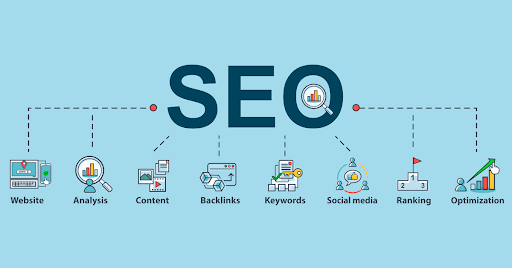It’s undeniable: the digital shift in healthcare, fueled by the ubiquity of smartphones, has changed how patients interact with professionals. More people reach into their pockets and pull out their phones for health advice, book consultations, or read about symptoms than ever before. For healthcare professionals, getting on board with mobile SEO isn’t just a recommendation; it’s crucial to staying relevant.
Digital Crossroads: PPC Ads vs. Organic SEO
When navigating the digital landscape, healthcare professionals often grapple with the choice between organic SEO and pay-per-click ads (PPC). Both strategies have merits and drawbacks; understanding them is essential for making an informed decision.
The Allure of Organic SEO
Organic SEO is akin to planting a tree. Initially, it requires effort, nurturing, and patience. But over time, it grows, providing shade, fruits, and an unshakable presence. Similarly, initiating an organic SEO strategy for a healthcare site demands comprehensive research, crafting quality content, and a deep understanding of the target audience, among other tasks. It’s not an overnight venture but a prolonged commitment.
Patients who use search engines are often drawn to the first few organic results. This is because they associate these top positions with trustworthiness and authority. In an industry where trust is paramount, being seen as a credible source can significantly enhance a patient’s confidence in a healthcare provider.
Delving deeper into mobile SEO, healthcare sites need to be more than just mobile-friendly. A mobile-optimized healthcare website should prioritize user experience and ease of access.
For instance, a click-to-call feature ensures that a patient can schedule an appointment effortlessly. An integrated AI chatbot can offer real-time assistance for general queries, guiding the patient and enhancing their browsing experience. Meanwhile, a regularly updated blog can serve as a fountain of knowledge, sharing invaluable health tips, the latest medical research, or news that caters to the patient’s thirst for information. Every feature and content should be tailored to cater to the patient’s needs, ensuring they leave the website feeling informed, assisted, and valued.
The Immediate Gratification of PPC
Now, there’s PPC – the paid route. Think of it as a billboard in the digital world. It offers a dynamic tool for immediate and targeted visibility for healthcare professionals. The inherent strength of PPC lies in its directness. It’s a straightforward equation: you invest, and in return, you’re awarded the prime real estate of the digital world, ensuring a surge of traffic to your platform.
Think about the plethora of services and updates you might want to promote: a pioneering medical procedure, glowing testimonials from recovered patients, or the inauguration of a new clinic branch. Using PPC, these can be thrust into the spotlight, positioned strategically at the top of search results, ensuring they capture the immediate attention of potential patients.
However, while PPC sounds tempting, it has its pitfalls. It’s like renting a prime spot; you lose it when you stop paying. And in the long run? Your pockets might feel the pinch.
The astute patient knows the difference between organic results and ads and might just scroll past the latter. For some, there’s a perception that organic results are more genuine, as they’ve earned their spot through merit and relevance, while PPC ads are there due to financial muscle. Such patients may inherently trust organic results more, bypassing ads, even if they occupy the top spot. Thus, while PPC can undoubtedly drive traffic and garner attention, it’s imperative to use it as part of a more balanced digital strategy.
Delving into the Intricacies of Mobile SEO for Healthcare
Mobile SEO is not just about making your website accessible; it’s about ensuring optimal user experience at every touchpoint. As healthcare professionals aim to make their services more patient-centric online, certain aspects become paramount in this mobile-first era.
The Imperative of Responsive Design
Consider this: A patient, perhaps anxious about a symptom, visits your site. But instead of finding answers, they’re greeted with tiny text, misaligned buttons, and clunky navigation. Their trust in the service diminishes before they’ve even stepped into the clinic. Responsive design eliminates these frustrations. It ensures the site looks and functions ideally across devices like smartphones, tablets, or desktops.
The Need for Speed
In the age of instant gratification, waiting feels like a burden. And for a mobile user, every second counts. A slow-loading website is a reflection of the service’s quality. That’s why trimming any excess fat is crucial: Compress images, streamline code, and choose a reliable hosting provider. These tweaks may seem technical, but they significantly enhance user experience.
Being Clear, Being Concise
Mobile screens have limited real estate. Bombarding users with lengthy paragraphs can deter them. Instead, get to the point. If a patient wants to know about a doctor’s qualifications, services provided, or clinic timings, this information should be readily available and easy to digest.
Wrapping Up the Mobile SEO Journey
The realms of healthcare and technology are intertwined now more than ever. For healthcare professionals, understanding and implementing mobile SEO strategies isn’t just about online visibility. It’s about building trust, facilitating patient access, and ensuring that when someone searches for healthcare services on their phone, they find a reliable, user-friendly, and trustworthy provider.
The road to mastering mobile SEO for healthcare is ongoing and filled with learning and adaptation. But the rewards – increased patient trust, improved service visibility, and sustained digital growth – are worth the effort.
Follow Techdee for more!
